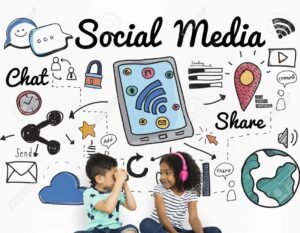In today’s digital age, social media performs an crucial function in the lives of many kids and teenagers. Platforms like TikTok, Instagram, Snapchat, and YouTube have modified how younger human beings communicate, learn, and entertain themselves. While these systems provide possibilities for creativity, connection, and education, they additionally pose sizeable dangers that demand interest from parents, educators, and policymakers.

Opportunities Offered by way of Social Media
Gives teenagers with severa benefits, including:
Creative Expression: Platforms such as TikTok and Instagram motivate creativity thru video production, photography, and storytelling. Children can exhibit their talents, share ideas, and even acquire focus for their work.
Educational Resources: Platforms like YouTube provide tutorials, lectures, and getting to know communities on a large vary of topics, supporting youth get entry to data past typical schooling.
Social Connectivity: Social media allows adolescents to remain linked with buddies and family, specifically all through instances of isolation, such as at some point of the COVID-19 pandemic.
Global Awareness: Exposure to various cultures and world troubles fosters empathy and understanding, assisting adolescents turn out to be extra knowledgeable international citizens.
Challenges and Risks
Despite its benefits, social media use amongst adolescents comes with challenges:
Mental Health Impacts: Prolonged use of social media can make a contribution to anxiety, depression, and low self-esteem, regularly fueled by way of assessment with others’ curated lives.
Exposure to Inappropriate Content: Many systems lack stringent age-appropriate content material controls, exposing young people to dangerous or express material.
Cyberbullying: Social media can facilitate bullying, with kids dealing with harassment, threats, or exclusion online.
Privacy Concerns: Children might also inadvertently share private information, making them susceptible to facts breaches or exploitation.
Addiction and Overuse: Excessive display screen time can intervene with sleep, bodily activity, and real-world relationships.
Best Practices for Healthy Use
To maximize advantages whilst minimizing risks, stakeholders can undertake the following strategies:
Parental Guidance: Parents must reveal their children’s social media use, set time limits, and interact in open conversations about on line protection and accountable behavior.
Education and Awareness: Schools can contain digital literacy programs, instructing college students about on-line etiquette, fundamental thinking, and the achievable pitfalls of social media.
Stronger Regulations: Policymakers can implement stricter age-verification measures and make certain systems furnish equipment for content material filtering and parental controls.
Encouraging Offline Activities: Balancing display screen time with hobbies, sports, and face-to-face interactions can promote universal well-being.
Conclusion
Social media is a double-edged sword for children—offering unparalleled possibilities for gaining knowledge of and connection whilst posing serious challenges to their intellectual and emotional health. By fostering digital literacy, merchandising effective habits, and advocating for safer on-line environments, we can assist youngsters harness the advantages of social media whilst mitigating its risks. Responsible use, guided by means of knowledgeable adults and sturdy policies, will allow teens to navigate the digital world confidently and safely.
